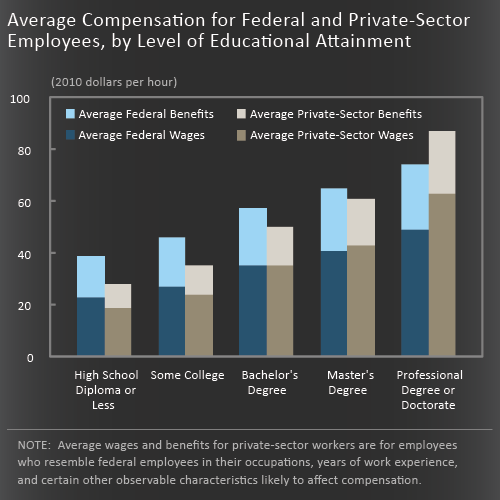Organizational objectives & total compensation in different markets
Total compensation entails extrinsic and intrinsic rewards that staffs get for carrying out responsibilities and duties given to them by an organization (Martocchio, 2009). Several laws affect the total compensation of staff in federal contracts. These include the laws of the labor market which are external to the business as well as the organizational policies that are internal to the business. One of the laws that affect the total compensation of workers entails the American fair employment standard regulation Act. This law is frequently referred to as the remuneration and hour regulation law. It provides conditions that influence total compensation. These include overtime payment, minimum salaries, and wage rate.
The minimum salary condition provided under the American fair employment act provides that the minimum salary that should be compensated to an employee to be approximately 7.25 dollars per hour. This law was approved in May 2005 and implemented in July 2009. However, currently, states are setting and implementing their minimum salaries due to the failure of the American Congress to transform the minimum salary rank reasonably. Another law that may affect employees’ total compensation is the living salary. This is an advancement from the minimum salary requirement due to transformations in the living costs. A living remuneration rate is the amount of money that an employee receives and be able to sustain himself and support his/her family above the legal poverty class. More than fifty local administration entities and companies have approved minimum living salary laws. These laws apply to construction corporations and other private businesses irrespective of the size of an organization (Martocchio, 2009).
Moreover, the American fair employment standard act requires that non-exempt workers be compensated for overtime hours they work. Overtime entails any extra hours worked beyond forty hours in a week. Therefore overtime may influence the total compensation of employees depending on the number of hours worked as overtime. The American employment act also provides that workers are entitled to a wage rate of one and a half times their frequent wage rate. The frequency rate encompasses the hourly compensation rate in addition to other kinds of payments received by an employee, for instance, shift differential.
Other laws that would influence the total compensation of employees include the Davis-Bacon regulation which obligates the labor secretary to establish the current rates applicable to administration building contracts that exceed 2000 dollars. Also, the Walsh-Healy regulation may influence the total compensation of employees working on a federal contract. This law requires the company to compensate current wages in the biotech industry as established by the labor secretary and as well obligates the company to compensate extra hours worked at 1.5 times the base rate for every hour beyond eight hours per day or forty hours per week (Baron, Dobbin & Jennings, 1986).
There is a variation in full compensation level on the biotech industry and other companies which consist of: the average reward of federal workers has increased beyond two times what employees earn in the private sector markets. The employees also have more benefits which affect their total compensation compared to other workers in private sectors. These benefits include retirement benefits, health covers, and paid leaves where employees in private sectors would get higher pay than those in such organizations. Similarities in total compensation between this organization and other organizations would include overtime pay and minimum salary that is set by the American fair employment standard regulation (Baron, Dobbin & Jennings, 1986). The below is an illustration of the differences and similarities in compensation for national and private-sector workers.

References
Baron, J. N., Dobbin, F., & Jennings, P. D. (1986).War and peace: The evolution of modern personnel administration in U.S. industry. American Journal of Sociology, 92, pp. 350–383.
Martocchio, J.J. (2009). A Human Resource Management Approach. Washington: Prentice Hall.